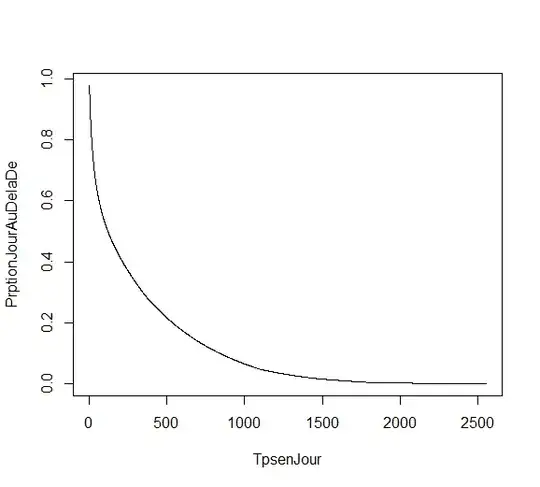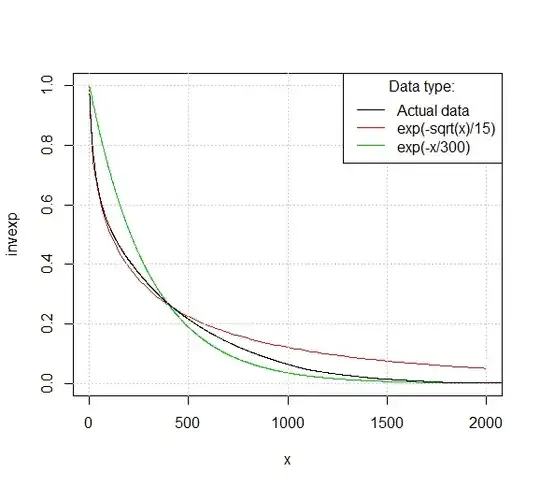First of all, this might makes zero sense, I pretty much don't know anything about statistics and i'm not a native english speaker to make things harder.
I have a few sets of data that are very similar where, I have some ratio* in the Y-axis and the time in days in the X-axis, I'm trying to do a regression on it. Here is what the plot looks like :
*The data is about sick leaves and I study their durations, the ratio is actually : the number of sick leave's days that happen beyond the x-th day divided by the total number of sick leave's days. (For instance if i have 3 leaves that are 2, 8 and 10 days long : the ratio for day 5 is (3+5)/(2+8+10)=0,4)
So here is what I did, I tried to find what kind of data this looks like to make a regression afterwards and get my coefficients. I thought it looked like the inverse of an exponential function so i compared it to that, and here is what I got :
What i wanted to do afterwards was to compare the coefficients of each sets of data that I have to be able to tell how different they were.
I dont know if there is any point in what I'm trying to do so if I need to be more specific about some things please tell me to.
To explain the situation more specifically, here is what I'm trying to do, I'm in an internship and I've been asked by an actuary to find a way to prove wether or not there is a "statistical difference" between those different sets of data that I have. The problem is that I find that a bit vague and I don't know exactly what to do. I asked advice to a statistician, who wasn't sure of what was expected but he hinted that I should look into linear regression.

